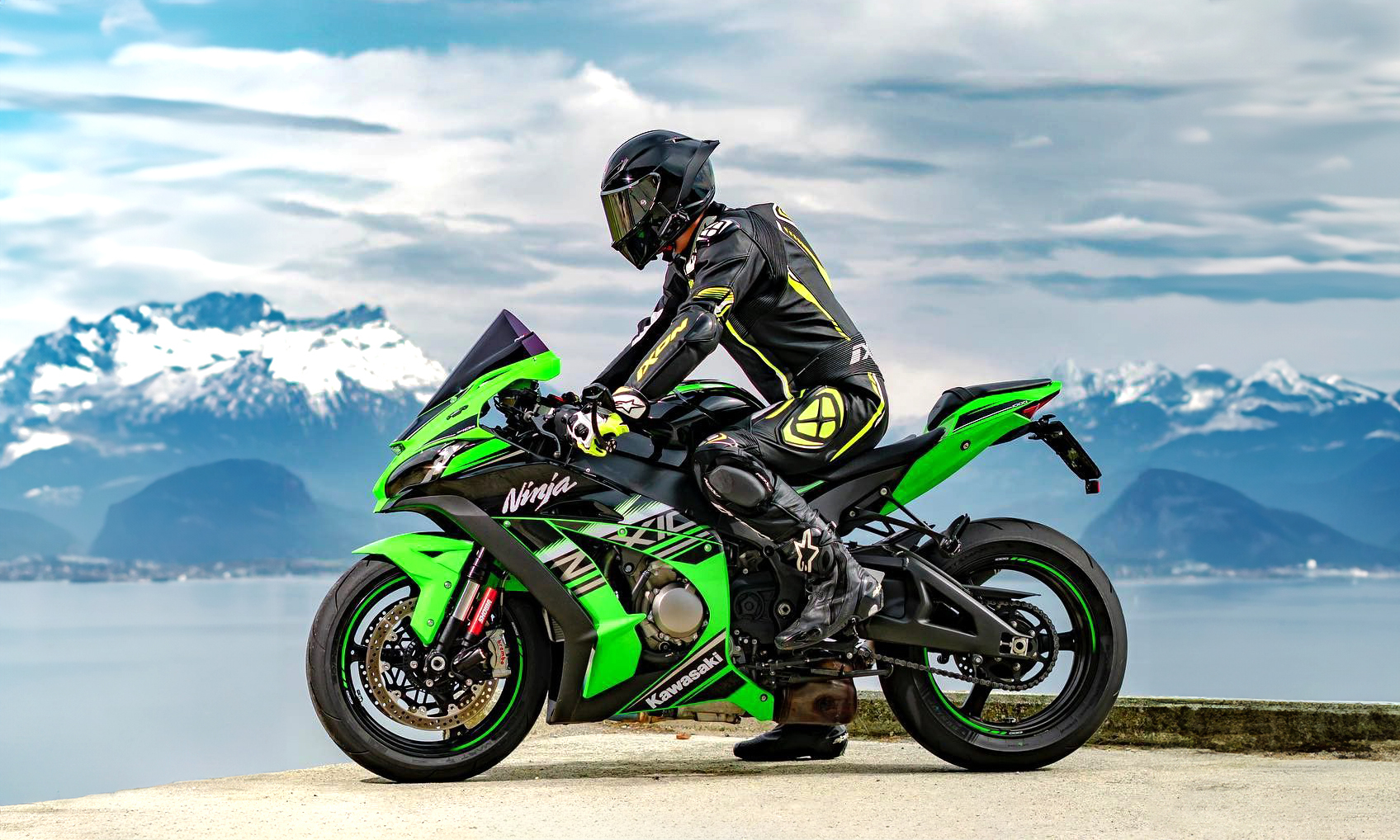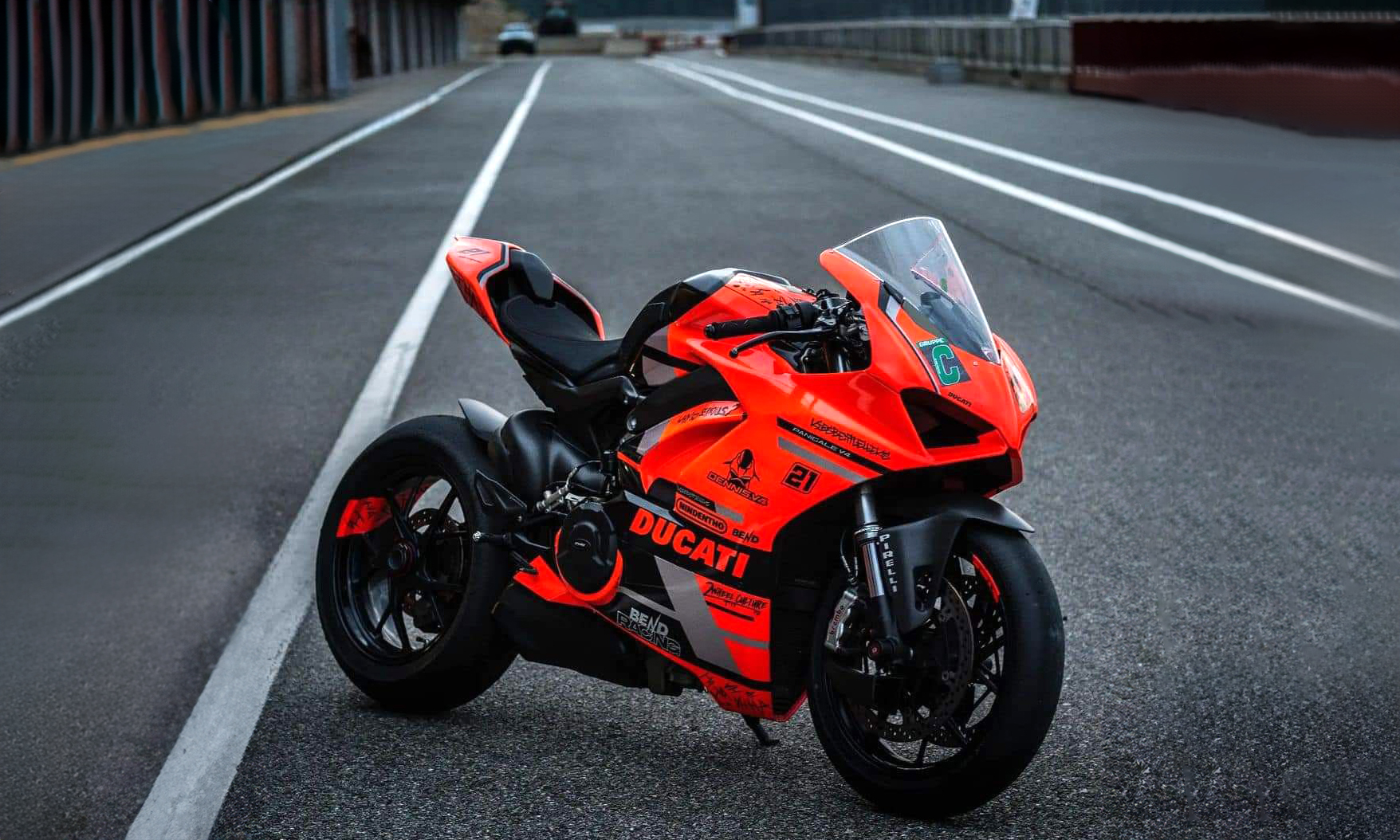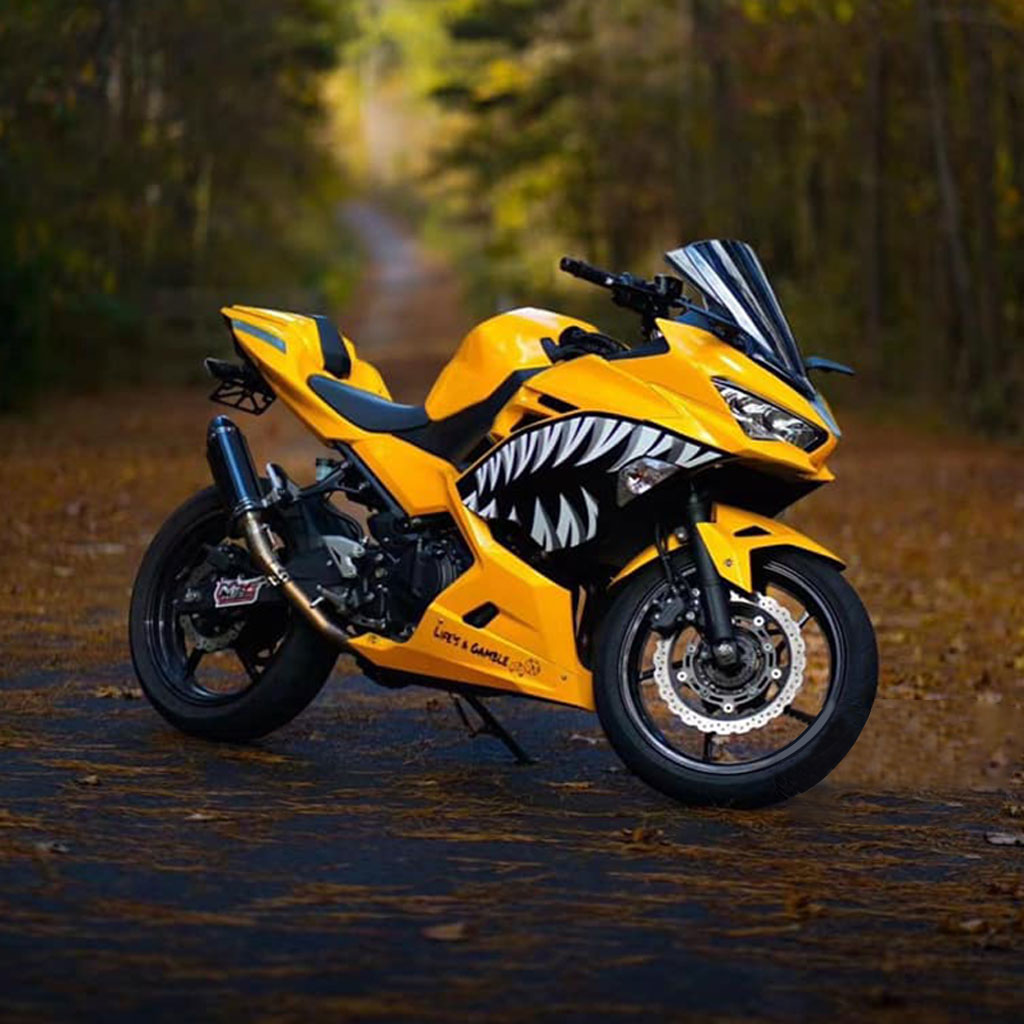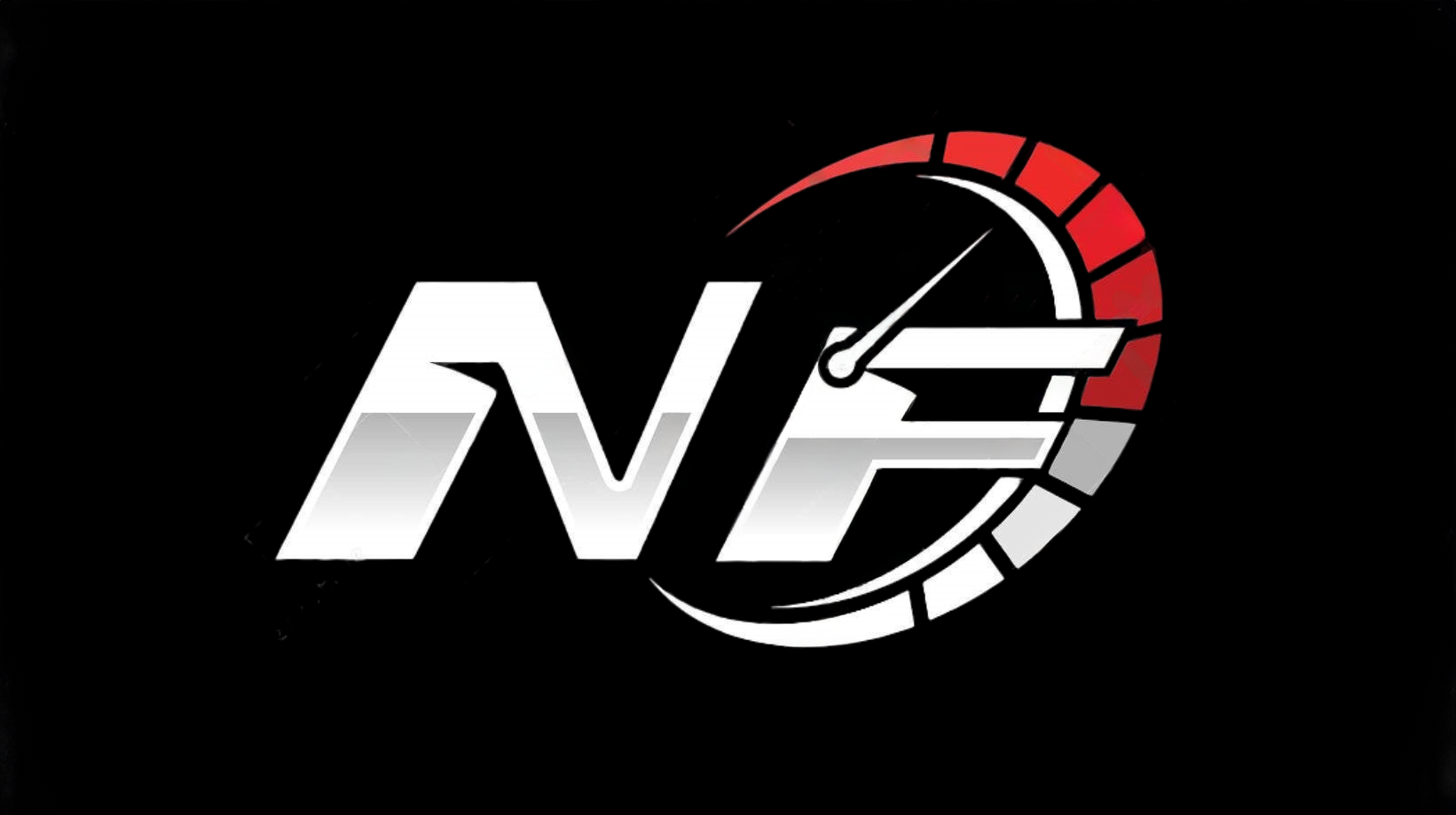How to Choose Affordable Motorcycle Fairings for Your Bike

Affordable motorcycle fairings are not just stylish covers for bikes; they play a crucial role in improving wind flow, blocking debris, and enhancing performance. However, finding the right fairing at a reasonable price can be challenging. It’s important to choose one that is both high-quality and affordable.
When selecting an affordable motorcycle fairing, consider factors like its type, material, and fit. These elements ensure you find a fairing that suits your bike and riding style. This guide will help you make a smart choice while staying within your budget.
Key Takeaways
Motorcycle fairings help by cutting wind and saving fuel.
Pick fairings that match how you ride: full for speed, half for balance, and quarter for a lighter style.
Plan your budget before buying fairings to save money but still get good quality and the right fit.
Check and clean your fairings often to keep them looking nice and working well. This stops dirt and damage.
Aftermarket fairings are cheaper and can look and work like original ones.
What Are Motorcycle Fairings?
Definition and Purpose
Motorcycle fairings are not just for looks. They are special panels attached to your bike's frame. These panels help with airflow and protect you and your bike. Fairings are made from materials like fiberglass, plastic, or carbon fiber. These materials are strong but lightweight. You can pick fairings that stay on or ones you can remove, depending on your bike and needs.
The main job of a fairing is to cut down air drag. It helps air move smoothly around your bike. This makes riding easier and saves fuel, especially at high speeds. Fairings also give you space to add gadgets, making them useful for more than just riding.
Key Functions of Motorcycle Fairings
Fairings are important for your bike's safety and performance. Here’s what they do:
Reduces wind resistance: They help air move better, making rides smoother.
Protects you and your bike: Fairings block dirt, bugs, and bad weather. They also protect bike parts.
Improves fuel efficiency: Less drag means your bike uses less gas, saving money.
Enhances stability and handling: Fairings add downforce, helping your bike stay steady at high speeds.
Adds safety features: In small crashes, fairings can protect your bike and visor from damage.
Fairings also make your bike look cool and modern. Whether you ride for fun or speed, fairings are a key part of your bike’s design and use.
Types of Motorcycle Fairings
Motorcycle fairings come in many styles to fit your needs. Each type has a specific purpose, so choose based on how you ride. Let’s explore the main types of fairings and their benefits.
Full Fairings
Full fairings cover the front and sides of your bike. They give the best protection and improve how your bike performs. These are great for racing or sports bikes because they reduce air drag. You’ll feel more stable and faster, especially on highways.
Why full fairings are awesome:
They block wind, dirt, and bad weather for a comfy ride.
Their design saves gas and makes your bike quieter.
They protect important parts like electronics from damage.
If you love speed or long trips, full fairings are a great pick. They also make your bike look sleek and modern.
Half Fairings
Half fairings cover the top part of your bike, like the handlebars. They balance protection and weight, making them popular for touring bikes. Half fairings help your bike move smoothly by cutting down air drag.
Why half fairings are a smart choice:
They block wind well without making your bike heavy.
They cost less than full fairings, saving you money.
They work for both city rides and long trips.
If you want something useful and affordable, half fairings are worth it.
Quarter Fairings
Quarter fairings are small and cover just the headlight area. They give your bike a sporty, lightweight look. While they don’t block much wind, they help with speed and handling.
Why you’ll like quarter fairings:
They’re light and easy to put on your bike.
Their simple design keeps your bike stylish and clear to see.
Quarter fairings are perfect if you want a cool upgrade without spending too much.
Type of Fairing | Description | Benefits |
|---|---|---|
Quarter Fairing | Smallest, sporty design | Lightweight, stylish, easy to install |
Half Fairing | Covers top half of bike | Good wind protection, affordable |
Covers front and sides | Best protection, better aerodynamics |
Each fairing type has its own perks. Whether you want full coverage, a mix of features, or a light design, there’s one for you.
Handlebar Fairings
Handlebar fairings are useful for better safety and comfort. They stretch from the windshield to below your hands, acting as a shield. These fairings are made from strong materials like plastic, fiberglass, or metal. This makes them tough enough for harsh conditions.
A big advantage of handlebar fairings is better wind control. They cut down wind resistance, keeping your bike steady at high speeds. They also protect you from gravel, dirt, and bad weather. For example, during rain, they shield your hands and upper body. This helps you focus on riding safely.
Another benefit is improved visibility. Their design makes you easier to spot on the road. This adds safety whether you're in the city or on highways. Handlebar fairings give your bike extra protection and a stylish look.
Wheel Fairings
Wheel fairings are less common but very helpful for bikes. They partly or fully cover the wheels, offering many benefits. These fairings improve how your bike looks and performs.
Here’s a quick list of wheel fairing benefits:
Feature | Benefit |
|---|---|
Better Aerodynamics | Cuts air drag for smoother rides. |
Saves Fuel | Uses less gas by reducing drag. |
Extra Protection | Blocks dirt and road debris. |
Weather Shield | Keeps parts safe from bad weather. |
Stylish Design | Makes your bike look cooler. |
Wheel fairings are great if you want a sleek, custom style. They also protect bike parts from dirt, saving you cleaning time. Plus, better aerodynamics means you’ll save on gas. If you want both style and function, wheel fairings are a smart choice.
Benefits of Motorcycle Fairings

Aerodynamics and Performance
Motorcycle fairings help your bike perform better. They guide air smoothly around your bike, cutting wind resistance. This makes riding easier and saves fuel. If you ride fast or own a sport bike, you’ll notice these benefits more.
Fairings lower drag, keeping your bike steady.
Wheel fairings reduce air turbulence near the wheels.
Less wind resistance means better gas mileage and smoother rides.
To improve your bike’s speed and save fuel, fairings are essential.
Protection and Safety
Fairings do more than improve speed—they keep you safe. They act as shields, blocking gravel, bugs, and rain. They also protect important parts like the engine and lights from harm.
In small crashes, fairings can stop scratches and protect your visor. They also keep water and dirt away from sensitive parts like bearings. This protection helps your bike stay in great condition, so you can ride worry-free.
Tip: Check your fairings often for damage to keep them working well.
Style and Aesthetics
Fairings make your bike look cool and stylish. They give it a modern design that grabs attention. You can even pick colors and designs to match your taste. Many riders choose fairings for both their looks and usefulness.
Motorcycle brands often show off fairings in ads because they look great. Whether you like a sporty or simple style, fairings let you show your personality while being practical.
Choosing the Right Fairing for Your Motorcycle
Think About Your Riding Style
How you ride decides the fairing you need. Do you love speed and racing? Full fairings are great for cutting wind and going fast. If you ride in the city, half or quarter fairings are better. They are lighter and easier to handle.
For long trips, touring riders like handlebar fairings. These give comfort and block wind. Think about where and how you ride most. Picking a fairing that matches your habits is the smartest choice.
Check Materials and Strength
Fairing materials are important. Common ones are ABS plastic, fiberglass, and carbon fiber. ABS plastic is cheap and light, perfect for custom fairings. Fiberglass is tough and handles rough rides well. Carbon fiber is strong and light but costs more, great for racers.
Strong fairings last longer and protect your bike better. Think about your budget and riding conditions. For bad weather, fiberglass is a good pick because it’s durable.
Make Sure It Fits Your Bike
Not all fairings work with every bike. Check if the fairing fits your bike’s model and year. A bad fit can hurt your bike’s safety and performance. Choose fairings that match your bike’s shape and size.
Custom fairings are also an option. They let you match your bike’s color and style. This makes your bike look unique and ensures a good fit. Read reviews and pick trusted brands to avoid problems.
Tip: Measure your bike and check the maker’s guide to find the right fairing.
Setting a Budget for Affordable Motorcycle Fairings
Making a budget is the first step to finding a fairing you can afford. You don’t want to spend too much, but quality matters too. Start by deciding how much money you can spend. Think about how often you ride and the weather you face. If you ride less, you may not need to spend as much as someone who rides daily or in bad weather.
Here’s how to plan your budget:
Research price ranges: Check the average cost for your bike’s fairings. Aftermarket fairings usually cost $300 to $700, making them a budget-friendly choice.
Include installation costs: If you can’t install it yourself, add labor costs.
Plan for upkeep: Fairings need care to last. Save some money for cleaning or small repairs.
Tip: Look for discounts or sales online. Many stores offer deals on aftermarket fairings, helping you save money.
By setting a clear budget, you can avoid overspending and still get a fairing that works well for your bike.
Balancing Quality and Affordability
Finding fairings that are both good and affordable isn’t hard. OEM (Original Equipment Manufacturer) fairings are reliable but cost 40-60% more than aftermarket ones. If you want cheaper fairings, aftermarket options are a smart pick. They come in many styles and materials, giving you more choices without spending too much.
When comparing fairings, focus on these things:
Material: ABS plastic is cheap and light. Fiberglass is stronger. Carbon fiber is the best but costs the most.
Fit and compatibility: A bad fit can hurt your bike’s performance. Make sure the fairing matches your bike’s model.
Reviews and ratings: Read what other riders say. Reviews can help you find fairings that are worth the price.
Note: Spending less doesn’t mean getting bad quality. Many aftermarket fairings work great and cost less than OEM ones.
By comparing your options, you can find a fairing that fits your budget and works well. The goal is to get the best value while improving your bike’s look and performance.
Cost Considerations for Motorcycle Fairings
Comparing OEM and Aftermarket Fairings
Choosing between OEM and aftermarket fairings depends on their cost. OEM fairings are made by your bike’s brand. They fit perfectly and are very reliable. But, they are expensive, costing $500 to $1500. Aftermarket fairings are cheaper, costing $300 to $700. They are a great option for riders on a budget.
Here’s a simple comparison:
Type | Price Range | Key Features |
|---|---|---|
OEM Fairings | $500 - $1500 | Perfect fit, very reliable |
Aftermarket Fairings | $300 - $700 | Cheaper, more style choices |
OEM fairings fit well but cost more money. Aftermarket fairings are affordable but may differ in quality. If you want to save money, aftermarket fairings are worth checking out.
Factors Influencing Fairing Prices
Fairing prices depend on several things. The material is important. ABS plastic is cheap, fiberglass is strong, and carbon fiber is light but pricey. The type of fairing also matters. Full fairings cost more than half or quarter fairings because they cover more.
Other factors include:
Fit for your bike’s model
Style and design options
Brand reputation and trust
Trends in the market can also change prices. As electric bikes grow popular, fairing costs might change too. Knowing these factors helps you understand why fairings cost what they do.
Finding Affordable Motorcycle Fairings
Finding cheap motorcycle fairings is easier than you think. Start by comparing prices online. Aftermarket fairings are often cheaper than OEM ones. Look for discounts or sales from trusted stores.
You can save more by picking ABS plastic fairings. They are light and affordable. If you can install them yourself, you’ll avoid paying for labor. Always read reviews to make sure you’re buying good-quality fairings.
Tip: Stick to your budget and focus on what matters most—style, strength, or price.
By following these tips, you can find fairings that match your bike and budget.
Maintenance Tips for Motorcycle Fairings
Cleaning and Protecting Fairings
Keeping your motorcycle fairings clean helps them last longer. Dirt, bugs, and small rocks can pile up and scratch the surface. This makes your bike look dull over time. Clean your fairings often to keep them shiny. Use a soft cloth or sponge with mild soap and water. Stay away from strong cleaners that could harm the surface.
To keep your fairings safe, use a good motorcycle cover. It protects your bike from weather, dirt, and dust when parked. While riding, fairings block stones and bugs, but a cover adds extra protection. It also keeps water off, which can damage paint and engine parts over time.
Tip: Wax your fairings after cleaning. This makes it easier to clean next time.
Inspecting and Repairing Damage
Fairings face a lot of wear from the road. Check them often for cracks, scratches, or loose parts. Small problems can get worse if ignored. For example, a tiny crack can grow and weaken the fairing.
Fix damage as soon as you see it. Small scratches can be polished away. Cracks can be fixed with repair kits made for materials like ABS plastic or fiberglass. These kits are simple to use and save money on replacements.
Note: Regular checks keep your bike looking good and help fairings last longer.
Replacing Worn or Broken Fairings
Sometimes, fairings get too damaged to fix. When this happens, replacing them is the best choice. How long fairings last depends on their material, how much you ride, and the conditions you face. Good-quality fairings can last years if cared for properly.
When buying new fairings, make sure they fit your bike’s model and style. Aftermarket fairings are cheaper and come in many designs. If you’re unsure about installing them, ask a professional. Well-installed fairings improve your bike’s safety and performance.
Tip: Save old fairings for backup use. They can help with quick fixes or custom projects.
Picking the best motorcycle fairing isn’t just about looks. It helps your bike perform better and stay protected. A good fairing also shows off your style. You need to find one that’s affordable and strong. Materials like ABS plastic or fiberglass are tough and don’t cost too much. Make sure it fits your bike and matches how you ride.
Setting a budget is important to get the most for your money. Trusted brands often have fairings you can count on. By thinking about these things, you can choose fairings that improve your rides without spending too much.
FAQ
What materials are used to make motorcycle fairings?
Motorcycle fairings are made from ABS plastic, fiberglass, or carbon fiber. ABS plastic is light and cheap. Fiberglass is strong and lasts long. Carbon fiber is tough and great for fast bikes. Each material works best for different needs.
Can I put fairings on my bike by myself?
Yes, you can install fairings if you have basic tools. Follow the instructions carefully. If you’re unsure or new to this, hire a pro. They’ll make sure the fairings are installed right and won’t harm your bike.
How should I clean motorcycle fairings?
Use a soft cloth with mild soap and water to clean fairings. Don’t use strong cleaners that might ruin the surface. After cleaning, add wax to protect them. Wax also makes cleaning easier next time.
Are aftermarket fairings as good as original ones?
Aftermarket fairings can be just as good as original ones. They cost less and come in many styles. Pick a trusted brand and check reviews. Make sure they fit your bike before buying.
How often should I check my fairings for damage?
Check your fairings every few weeks or after long trips. Look for cracks, scratches, or loose parts. Regular checks help you fix small problems early and avoid big repairs later.

